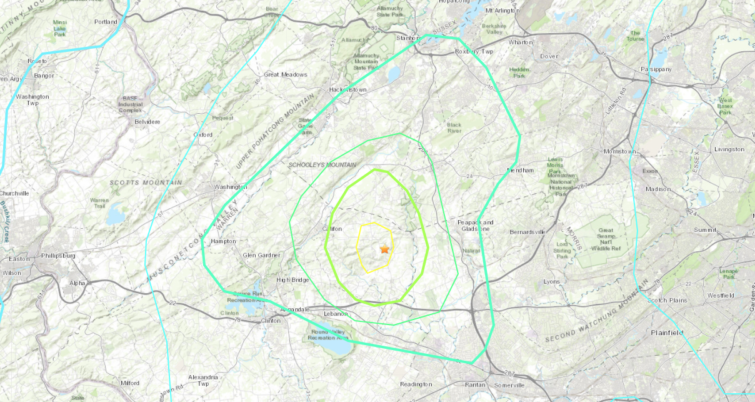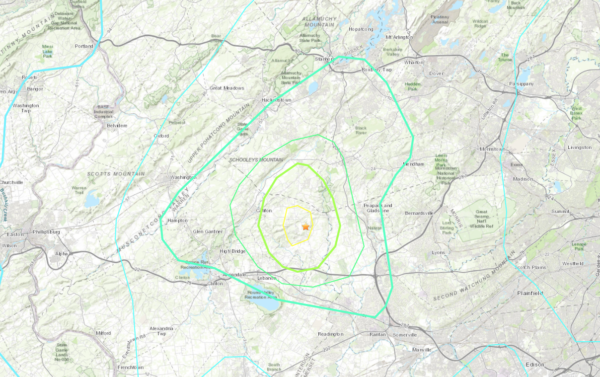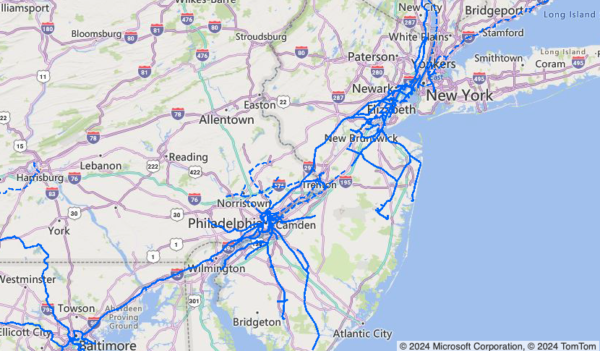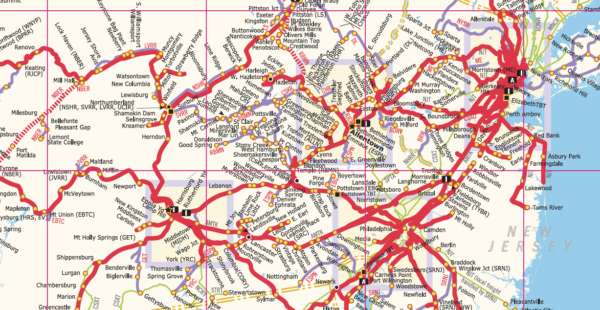Track Inspections and Speed Restrictions After 4.8 Earthquake in NJ; Amtrak, CSX, MTA (UPDATED 4/8)
Written by Jennifer McLawhorn, Managing Editor
WHITEHOUSE STATION, N.J. – After a 4.8 earthquake, Amtrak implements speed restrictions and performs track inspections. CSX inspected bridges and related structures.
According to the U.S. Geological Survey, a 4.8 earthquake occurred in Whitehouse Station, New Jersey on April 5th that could be felt from New York and Pennsylvania down to Maryland.

CSX
Many rail lines run through the surrounding areas, including freight and passenger rail. CSX runs lines throughout New Jersey, as shown in the image below:

RT&S reached out to ask about possibly affected structures and speed restrictions, CSX responded: “CSX operated at restricted speeds in the areas impacted by the earthquake while inspections of bridges and structures were conducted. We observed no issues and resumed normal operations at 1pm ET.”
Amtrak
Amtrak tweeted at 11:18 a.m.:
Amtrak states that it has “initiated track inspections following the 4.8 magnitude earthquake in New Jersey. Speed restrictions have been implemented throughout the Northeast until all inspections are completed. Delays should be expected.”
Norfolk Southern
Norfolk Southern runs freight throughout the northeast as shown in the image below:

As of reporting, Norfolk Southern has not yet responded to an inquiry. Check back for updates.
MTA
The Metropolitan Transportation Authority (MTA) released a service update that states the agency is advising the regional transit system is operating “safely and normally.” It also stated that initial inspections showed no damage to MTA infrastructure. Any abnormalities are to be reported by frontline staff per instructions from the agency.
MTA Chair and CEO Janne Lieber said “I want to reassure New Yorkers that the service on the transit system, all aspects of the transit system, maintain continuously operating safely throughout the incident and has continued right to now. I’ve been in touch with the president of all the MTA agencies, starting with Bridges and Tunnels. Cathy Sheridan, the president of MTA Bridges and Tunnels, is here, but also New York City Transit, Long Island Railroad, and Metro North. . . Initial inspections of all facilities have been completed, and there are initial further inspections ongoing, emphasizing that the seven bridges operated by MTA have been inspected, and I want to emphasize those were designed to withstand much stronger seismic impacts than we experienced today.”
President of MTA Bridges and Tunnels Cathy Sheridan said they went out to complete preliminary inspections “within about five minutes of the earthquake occurring. All the preliminary results came back negative, no impacts to our facilities. We have also mobilized all of our structural inspection teams, which do our biennial inspections on a regular basis. They are now out on the ground. We expect to have results from them by 4 p.m. But again, we don’t expect an earthquake of this magnitude to have any impact on our facilities.”
When asked about the inspection process, Sheridan responded that “tunnels are very resilient for seismic impacts. They move with the ground. Again, it’s a hands-on inspection. We go and do visual inspection to see if there are any damages.” MTA Chair Lieber added that “it’s exactly the same in the subway system. We have folks who routinely walk the track and inspect structure as well as track, and those protocols are in place.”
On April 6th, the MTA announced an update after a 4.0 aftershock.
After the aftershock occurred at 5:59 p.m. on April 5th, MTA announced it would conduct follow-up inspections of infrastructure. The agency stated its frontline staff have been “instructed to report any abnormalities, with none being flagged.”





